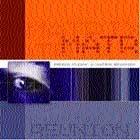
Although many Lawrentians might not be aware, a band came out of Lawrence in the mid-70’s, and became an active force on the increasingly popular jazz-rock scene. It was in 1974 that John Harmon (then the director of jazz studies), with the some of the finest musicians to come from this conservatory, put together the group, Matrix. Harmon, along with Fred Sturm, current director of jazz studies, began the jazz program here only a few years prior to the creation of Matrix.
The band made its first big impact in 1976, performing at the prestigious Monterey Jazz Festival. On the cutting edge of the time, Matrix gained popularity for their contributions to the new style of jazz that has become known as “fusion.”
Matrix could be seen on programs with nearly all the most famous bands of the day, including Duke Ellington, Buddy Rich, Maynard Ferguson, Weather Report, and Pat Metheny.
Matrix toured the country and performed at several distinguished jazz festivals like Monterey and Newport. (Rumor has it that the band holds the record for the longest standing ovation at one of these jazz festivals.) Needless to say, Matrix left its mark on the music scene of the 70’s.
Over 20 years later, in 2000, the band reunited in the studio to lay down some new tracks on their latest album, Proud Flesh: A Matrix Reunion.
Back again were original members Larry Darling, Kurt Dietrich, Mike Hale, and Jeff Pietrangelo, as well as Michael Murphy, John Kirchberger, Brad McDougall, and Randy Tico, who joined the band during its run in the 70’s, all to reunite with Harmon again. Tom Washatka filled in to complete the group in 1992 for their last reunion.
“No, Seriously,” by Larry Darling, opens the set. It is reminiscent of the late music of Miles Davis from the 80’s. A mix of funk and world rhythms lay down a foundation for simple but tight horn lines and the voice of Washatka’s saxophones.
Next on the set is John Harmon’s “Reunion Dues,” an easy-going tune which features a funky Washatka on tenor saxophone, and very 70’s-sounding Larry Darling on a distorted wah-wah trumpet.
The upbeat “Festival City” follows, opening with a traditional samba rhythm which is felt throughout the track. The groove gives way to a nice, smooth solo by Harmon and then returns to close the piece.
Harmon begins his composition “Padre Island” with a beautiful piano introduction, preceding the sweet-sounding groove laid down by the rhythm section. Harmon solos nicely here, appropriate for the piece.
The next piece, Harmon’s “Proud Flesh,” pays homage to the legendary Miles Davis, whose influence is highly recognizable in the group’s sound. “Proud Flesh” is a composite of four tunes by Harmon, most of which sound a lot like the Davis bands of the 80’s.
Harmon reads excerpts from Davis’s autobiography in various sections of the piece, with recording techniques to make his voice sound remarkably similar to Davis’s hoarse voice. Outbursts of solo trumpet in the style of Davis add to the theme of respect for the influential musician.
The album closes with the sentimental “Branches,” composed by Darling. The soft groove set by various percussion instruments provides a smooth accompaniment for Tico’s melodic bass.
It was good to see the result of a reunion of a band that got its start at our very own university. Although at times the music may seem “dated,” one gets the unexplainable feeling that the musicians were doing it more for themselves than for anything else. After all, isn’t that the best reason for creating music?
The performance is very clean, although at times it seems almost cold, as if the musicians were not in the recording studio together to lay down the tracks. Nevertheless, there were some very nice moments on the album, particularly in the solos of Washatka and Harmon.
